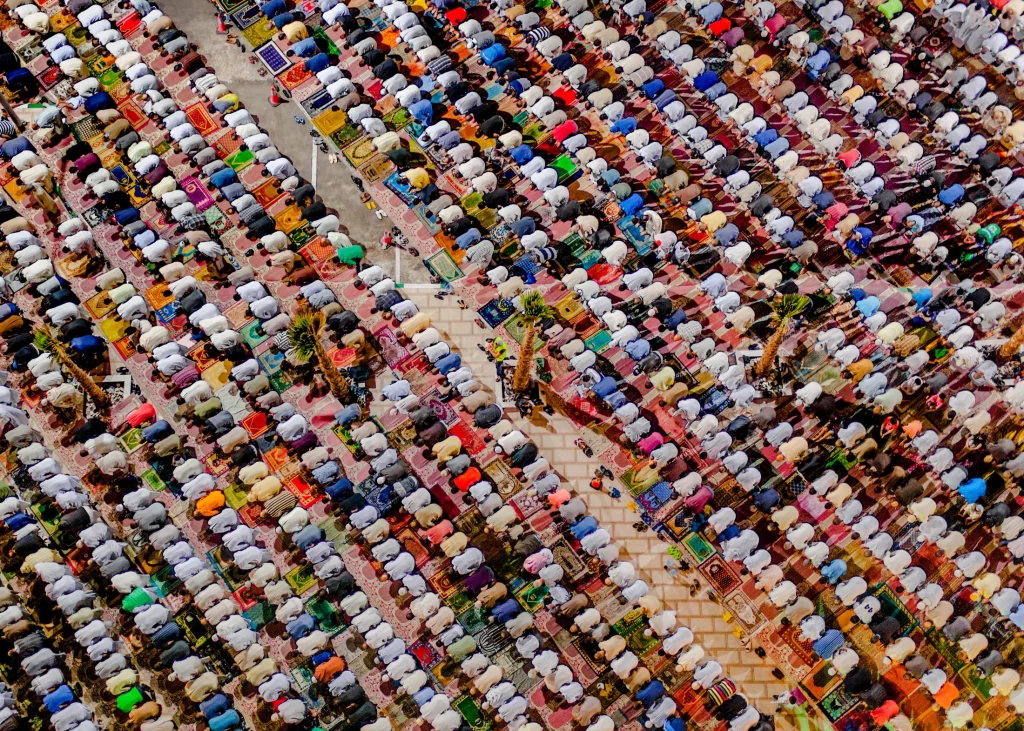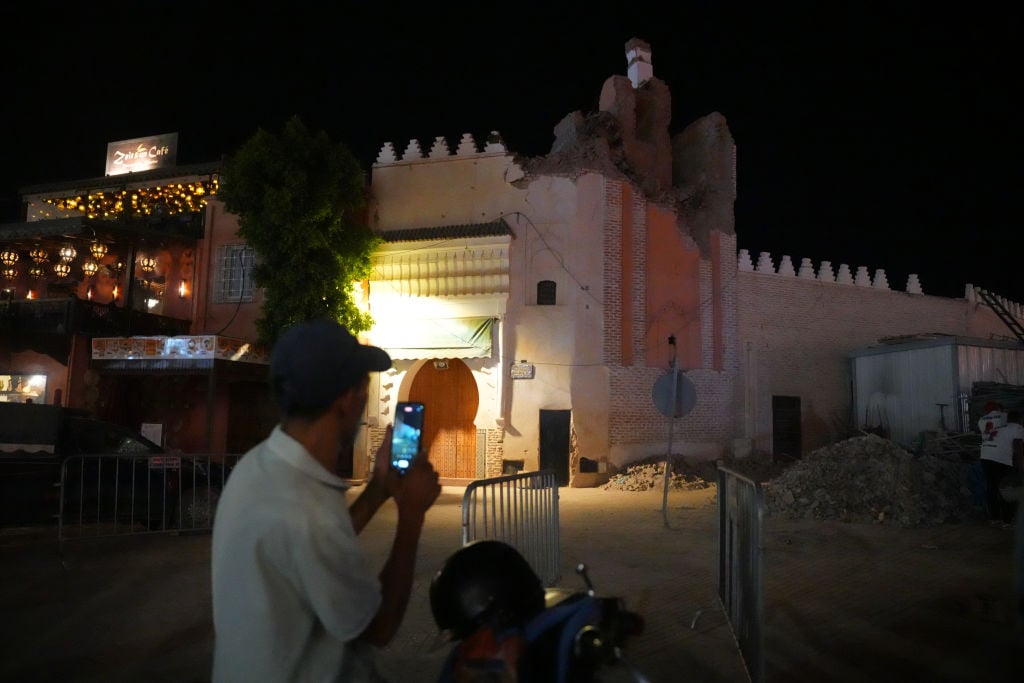Yto Barrada, Meriem Bennani, and Other Moroccan Artists Have Launched a Print Sale to Support Earthquake Relief Efforts
Historic mosques and UNESCO World Heritage Sites are among the structures destroyed in last week’s deadly earthquake.

The full extent of the devastation caused by the 6.8 magnitude earthquake that struck western Morocco last Friday, September 8, is still being assessed. To date, over 2,800 deaths have been reported, while an additional 1,400 people remain seriously injured. In total, an estimated 300,000 people were impacted.
Now, a group of Moroccan artists are coming together to raise funds for relief efforts.
Yto Barrada, Meriem Bennani, Hassan Hajjaj, and 23 other artists with ties to the north African country have launched a print sale called Artists For Morocco. Each print is priced at €125 ($134), with all proceeds set to go to two NGOs: Amal Women’s Training Center, a Marrakesh-based charity delivering food to victims; and Rif Tribes Foundation, which is working to bring aid to remote villages affected by the natural disaster.
The mutual aid initiative was spearheaded by designer Ismail Elaaddioui, editor and writer Samira Larouci, and photographer Anass Ouaziz. Other participating artists include Abdela Igmirien, Yoriyas Alaoui Ismaili, Seif Kousmate, Mous Lamrabat, and Fatima Zohra Serri.
The earthquake, the largest recorded in Morocco’s history, has left scars on the country’s cultural heritage as well. In Marrakech and its surrounding region, which were among the areas hardest hit, numerous historic structures and cultural centers were damaged; many were outright destroyed.
Sections of the centuries-old sandstone walls that surround the city’s Medina district—a UNESCO World Heritage site since 1985—have cracked and crumbled. Inside, the Jemaa El-Fnaa marketplace has suffered significant damage, as has the minaret of the Kharbouch Mosque located there.
Footage of Marrakech’s 800-year-old Koutoubia Mosque shaking during the earthquake has circulated on social media in recent days, leaving many fearing the fate of the city’s most famous landmark. The damage to the structure is still being assessed.
“After a disaster like this, the most important thing is to preserve human lives,” said Eric Falt, the Regional Director of the UNESCO Office in Northern Africa, in a statement to the press. “But it is also necessary to immediately plan for the second phase, which will include the reconstruction of schools and cultural assets affected by the earthquake.”
“It can already be said that they are much more significant than expected,” he added.

A man photographs a partially damaged mosque on September 9, 2023 in Marrakech, Morocco. Photo: Carl Court/Getty Images.
Outside of Marrakech, entire villages have been razed. The 12th-century Tinmel mosque in Morocco’s High Atlas Mountains—added to Unesco’s Tentative World Heritage list in 1995—has been almost completely demolished. Falt told The Art Newspaper that UNESCO plans to send a team to asses the damage to the site soon.
“It’s a symbolic place in the history of Morocco because it was the starting point of the Almohad military campaigns against the Almoravid dynasty, at the beginning of the 12th century,” he said, noting that structure’s destruction “constitutes an inestimable loss for the national heritage of Morocco.”
https://news.artnet.com/art-world/morrocco-earthquake-relief-efforts-2361811



Geen opmerkingen:
Een reactie posten